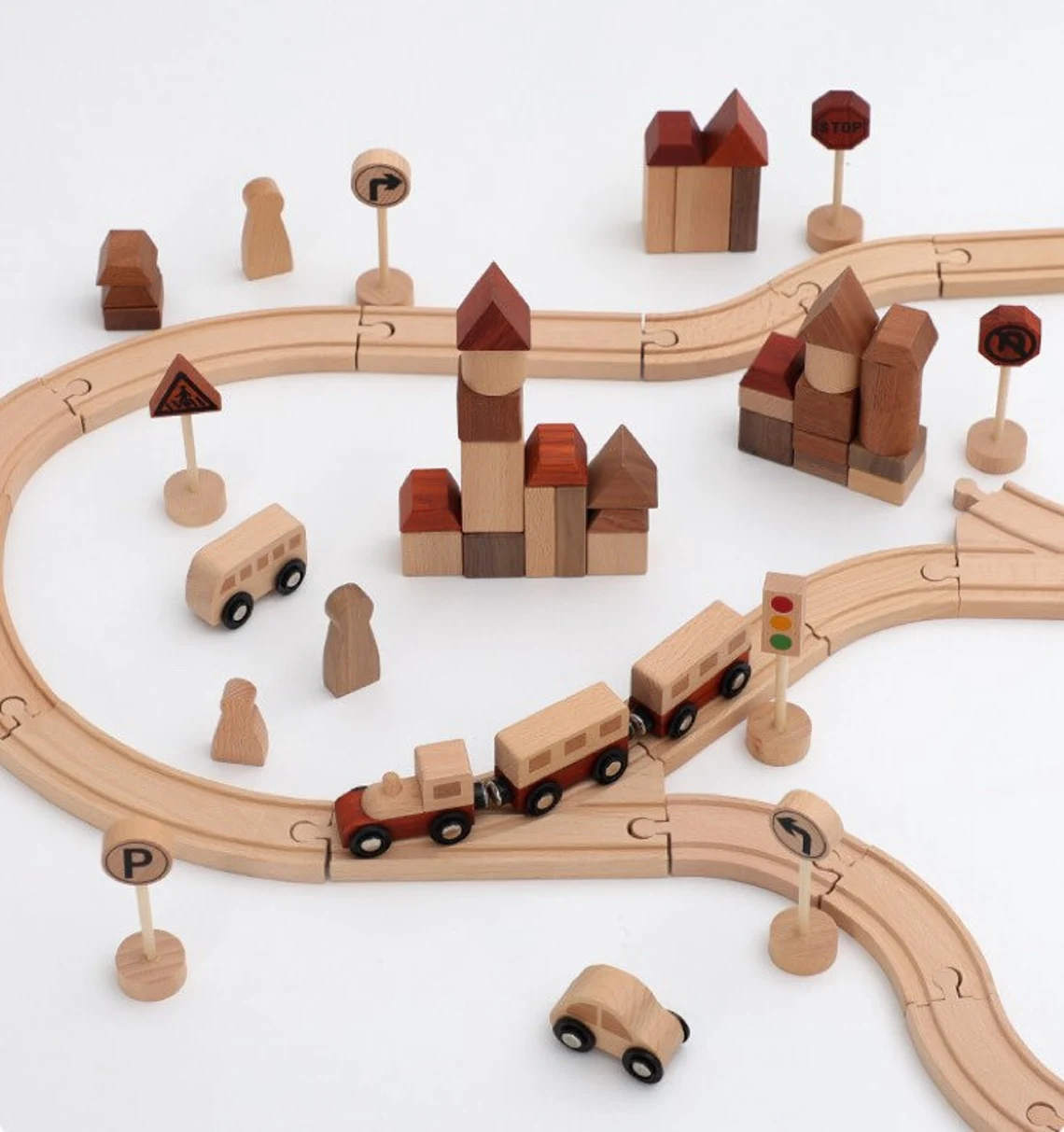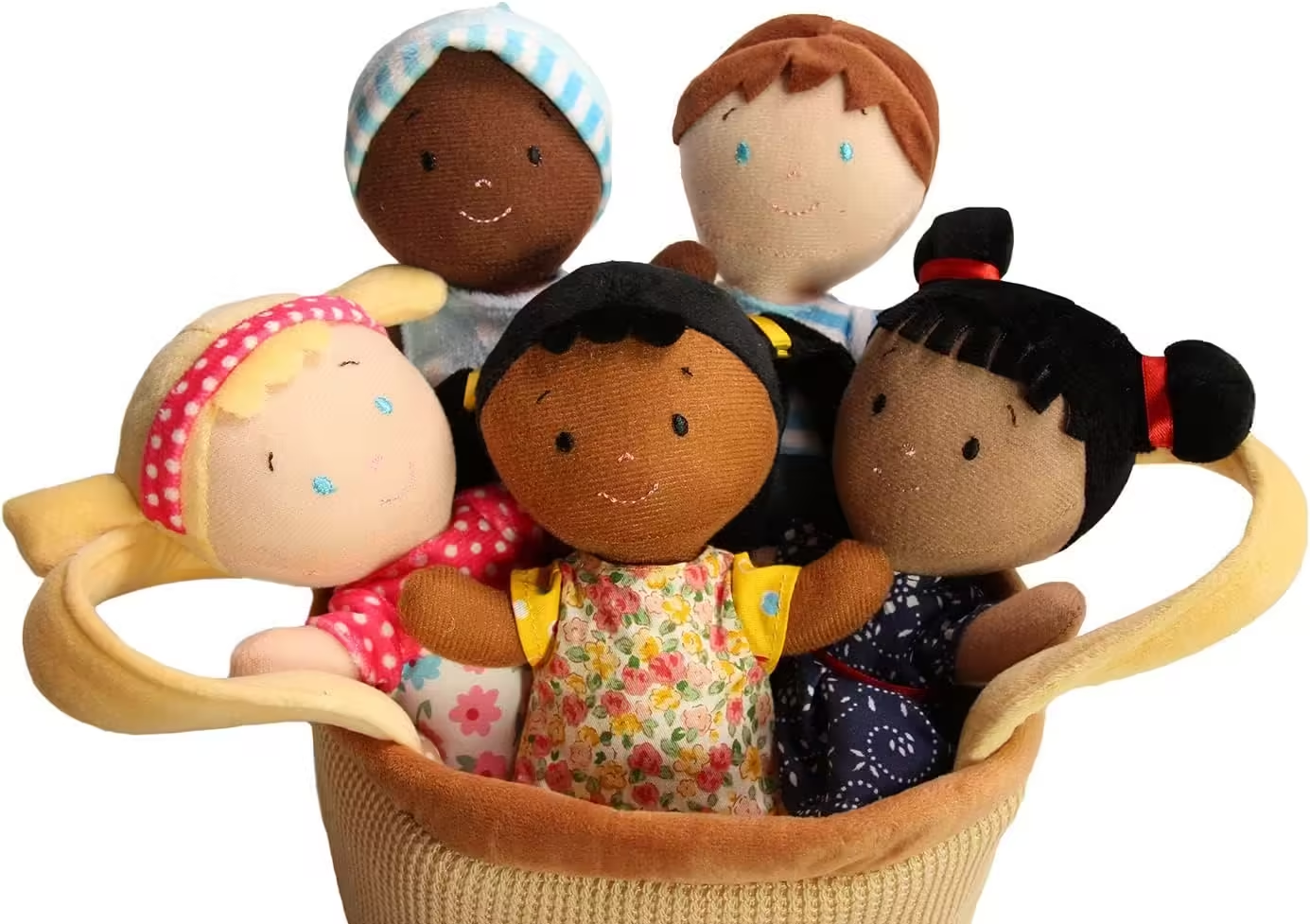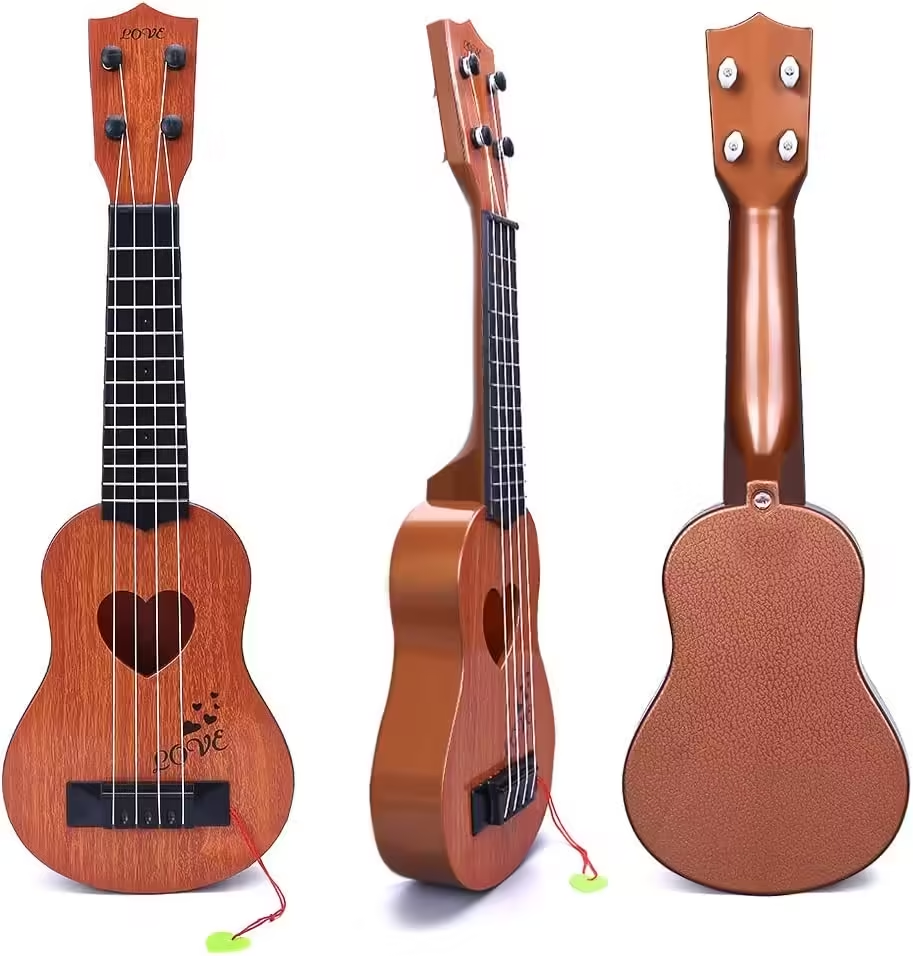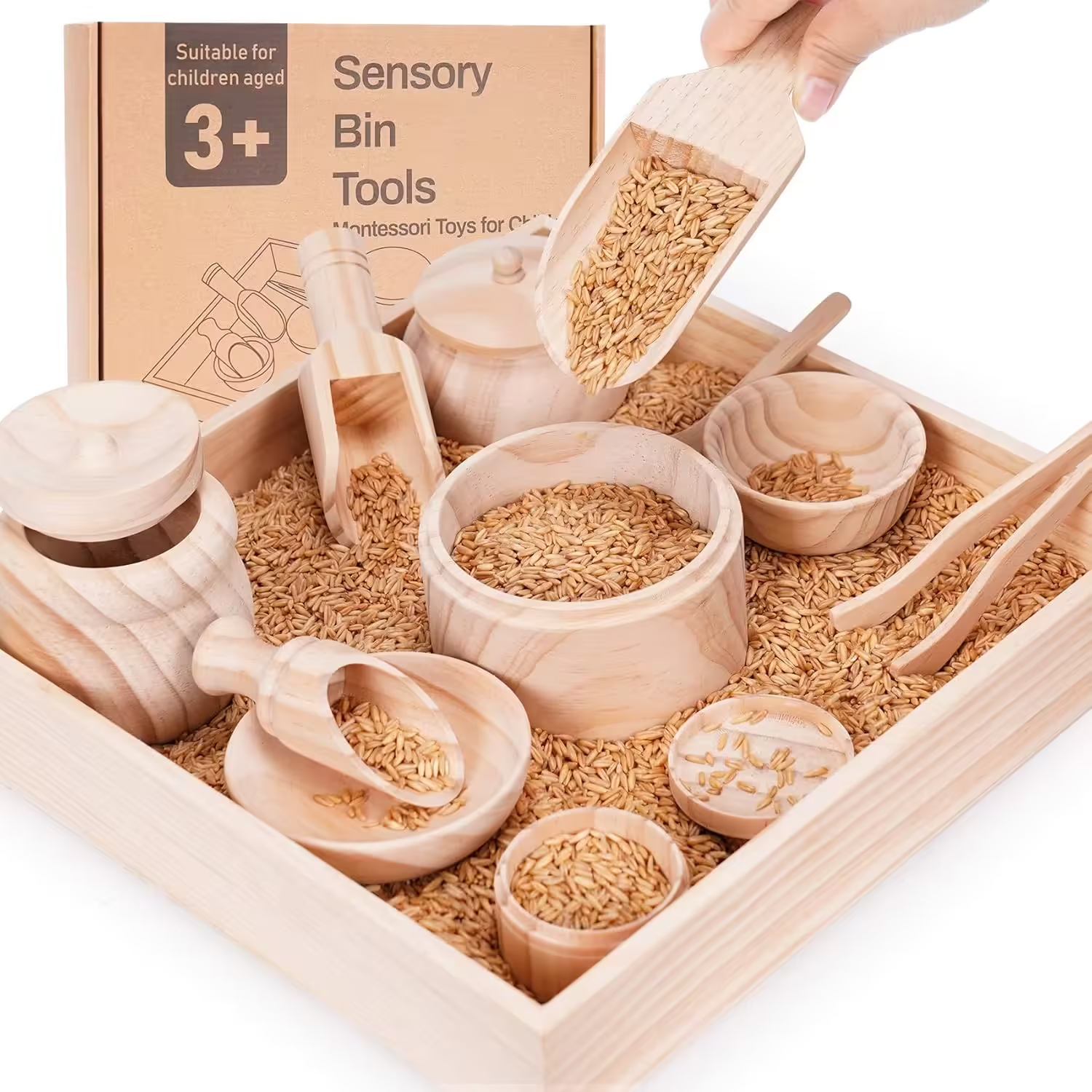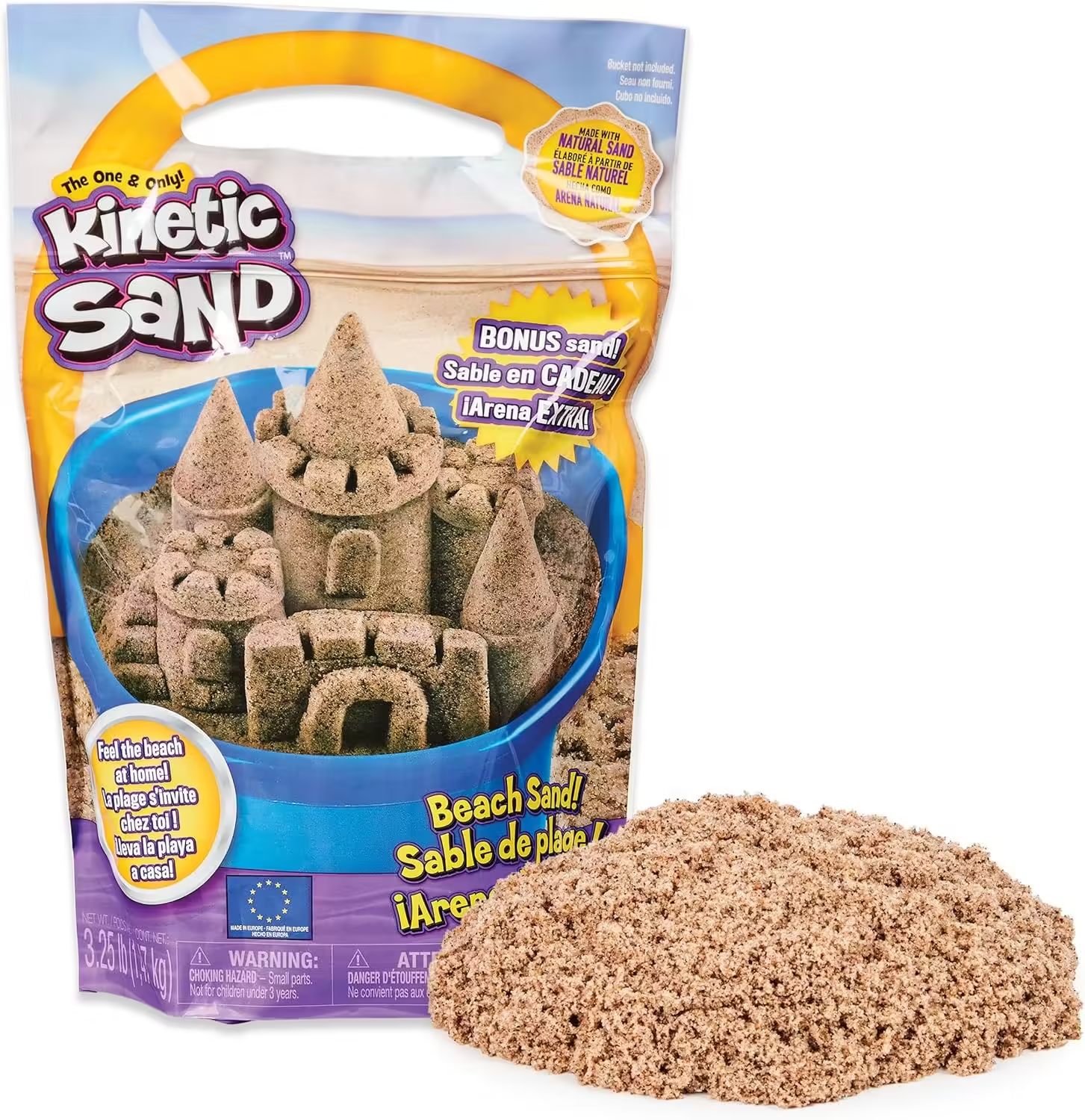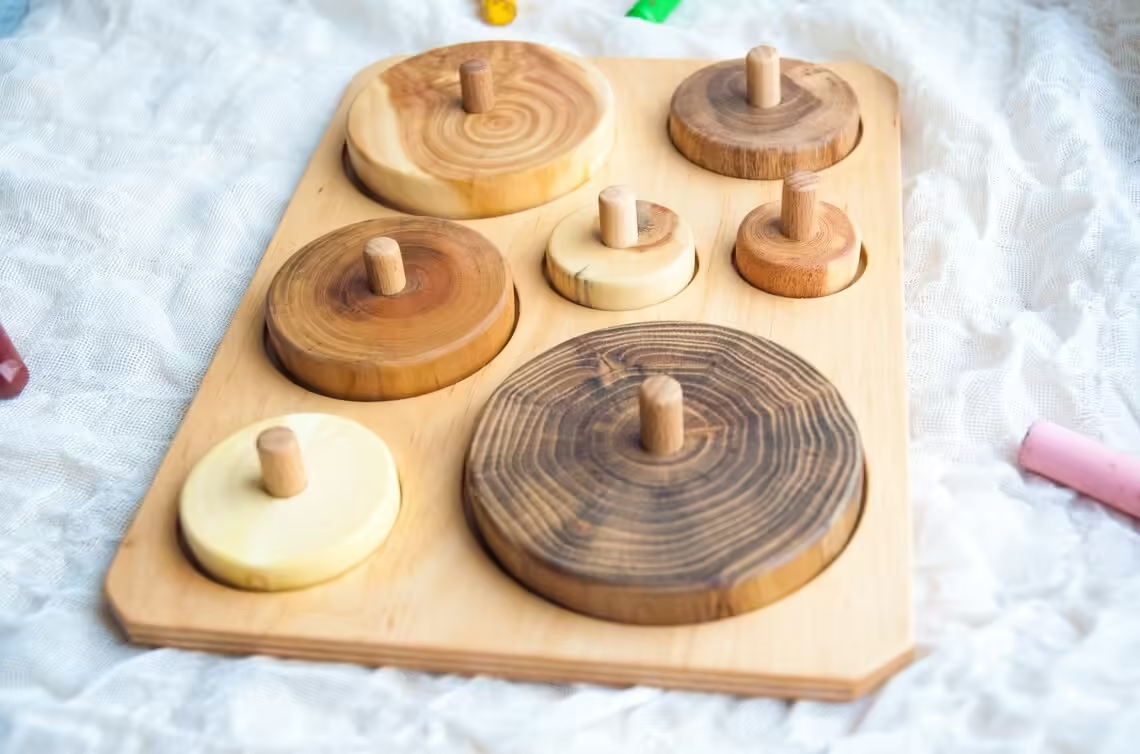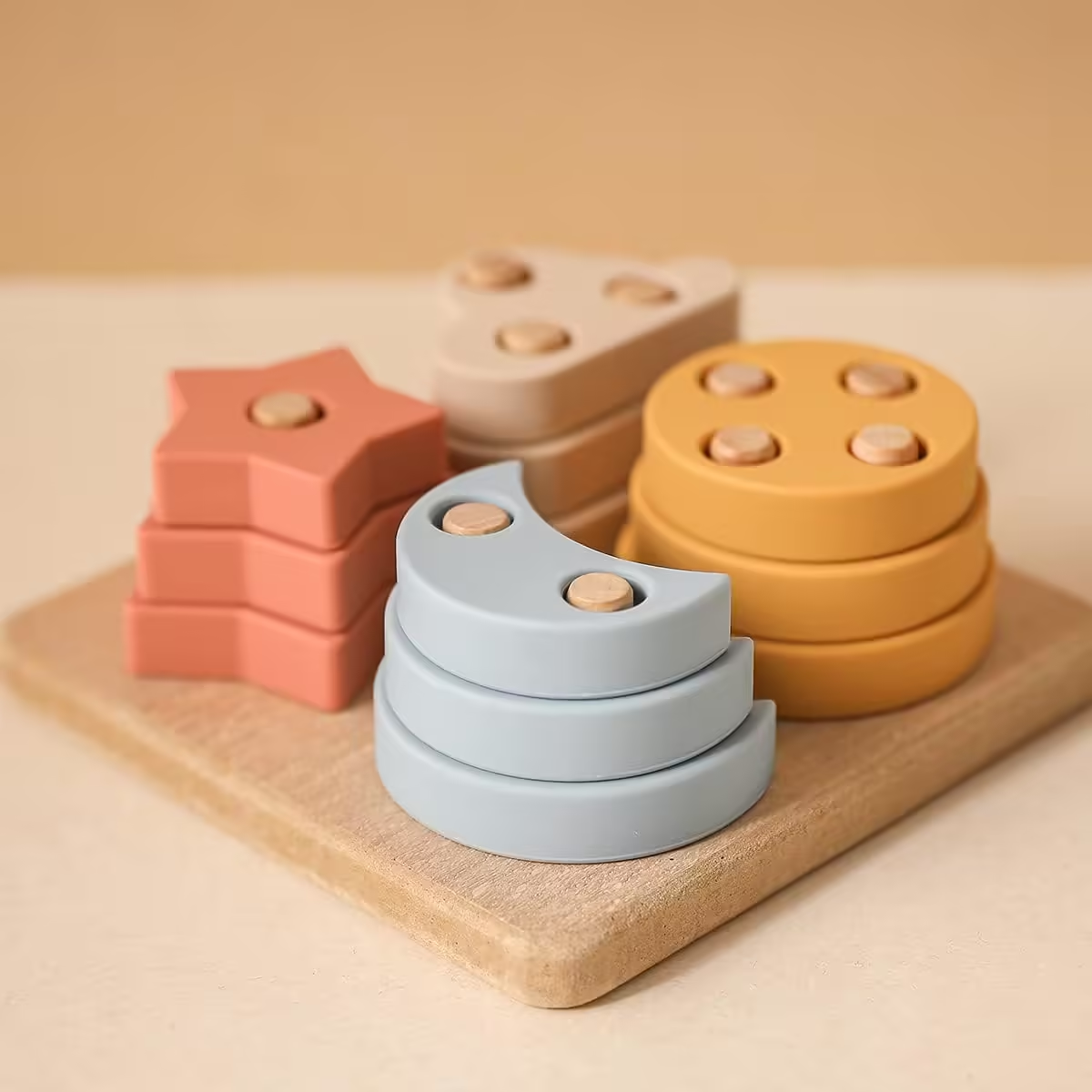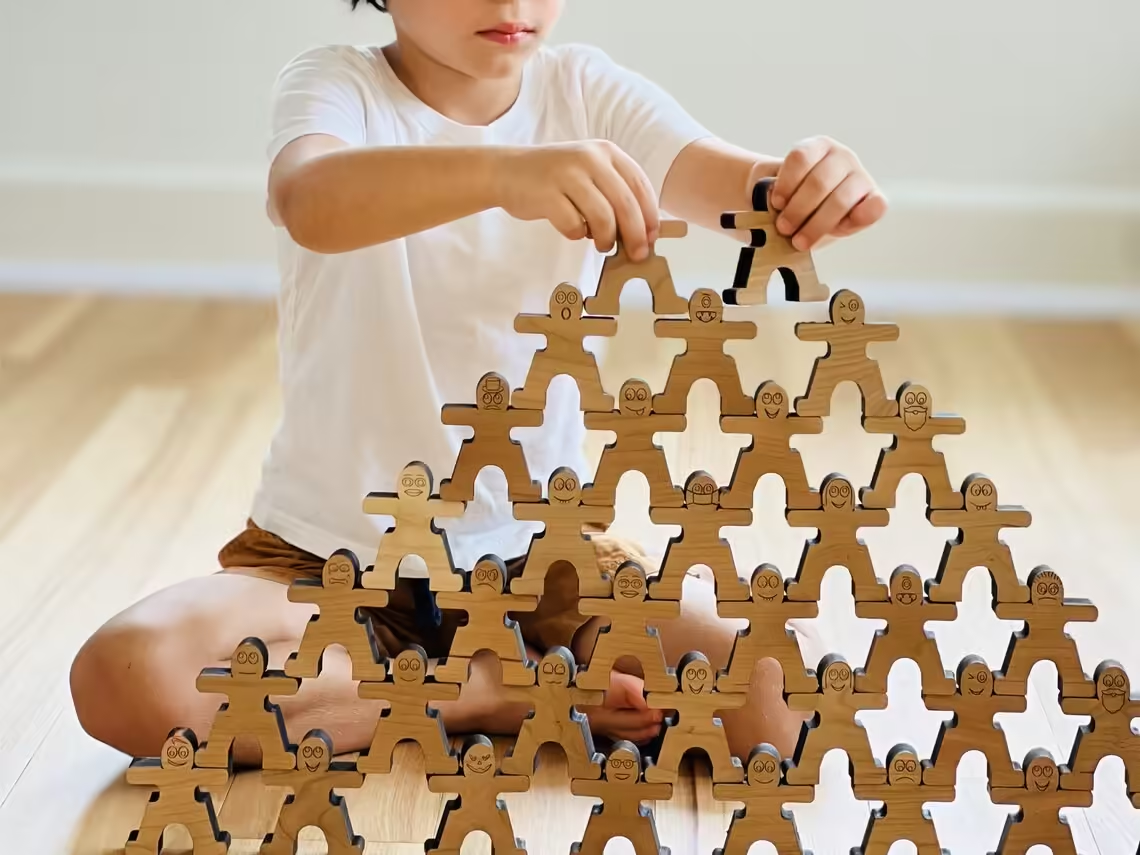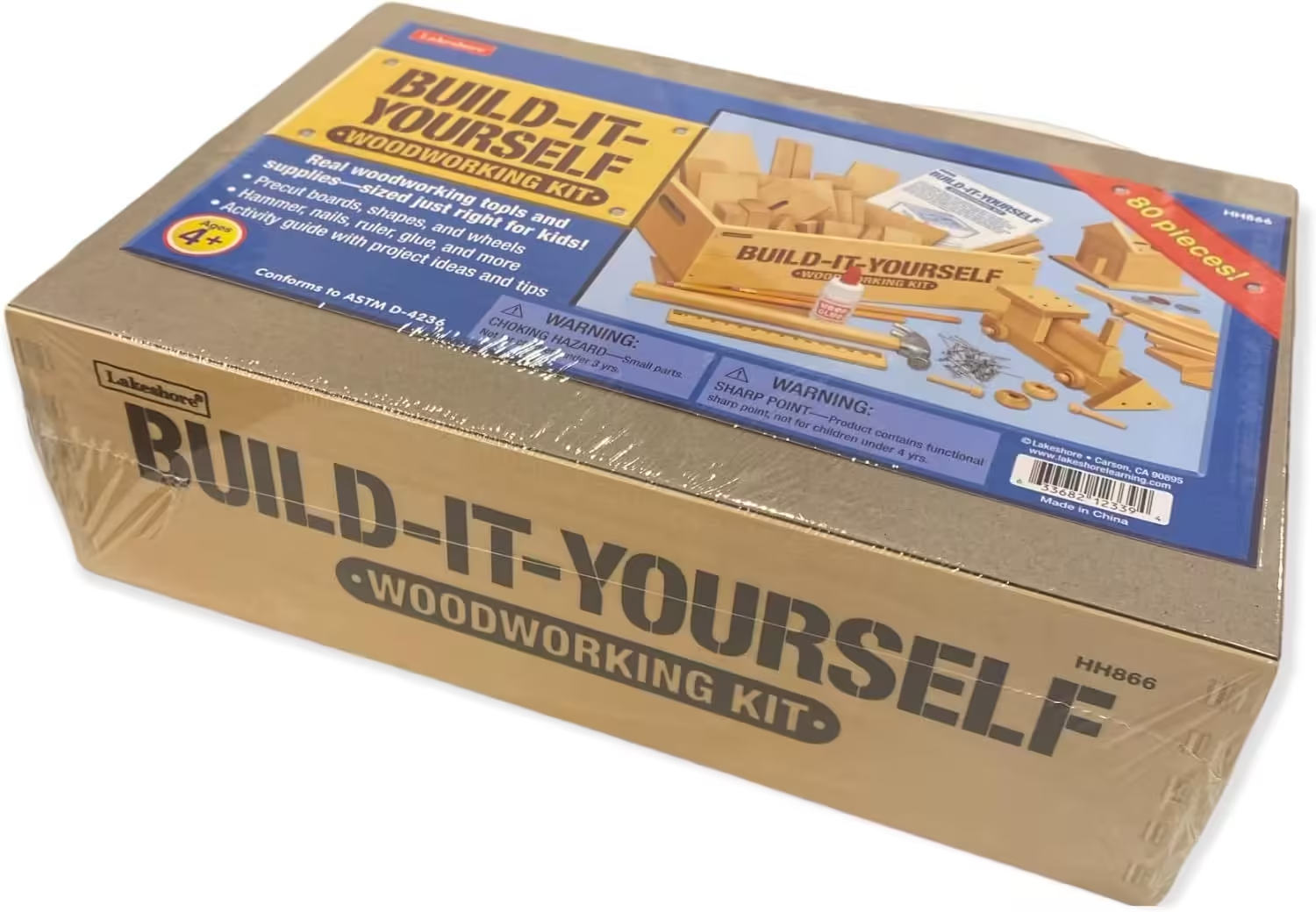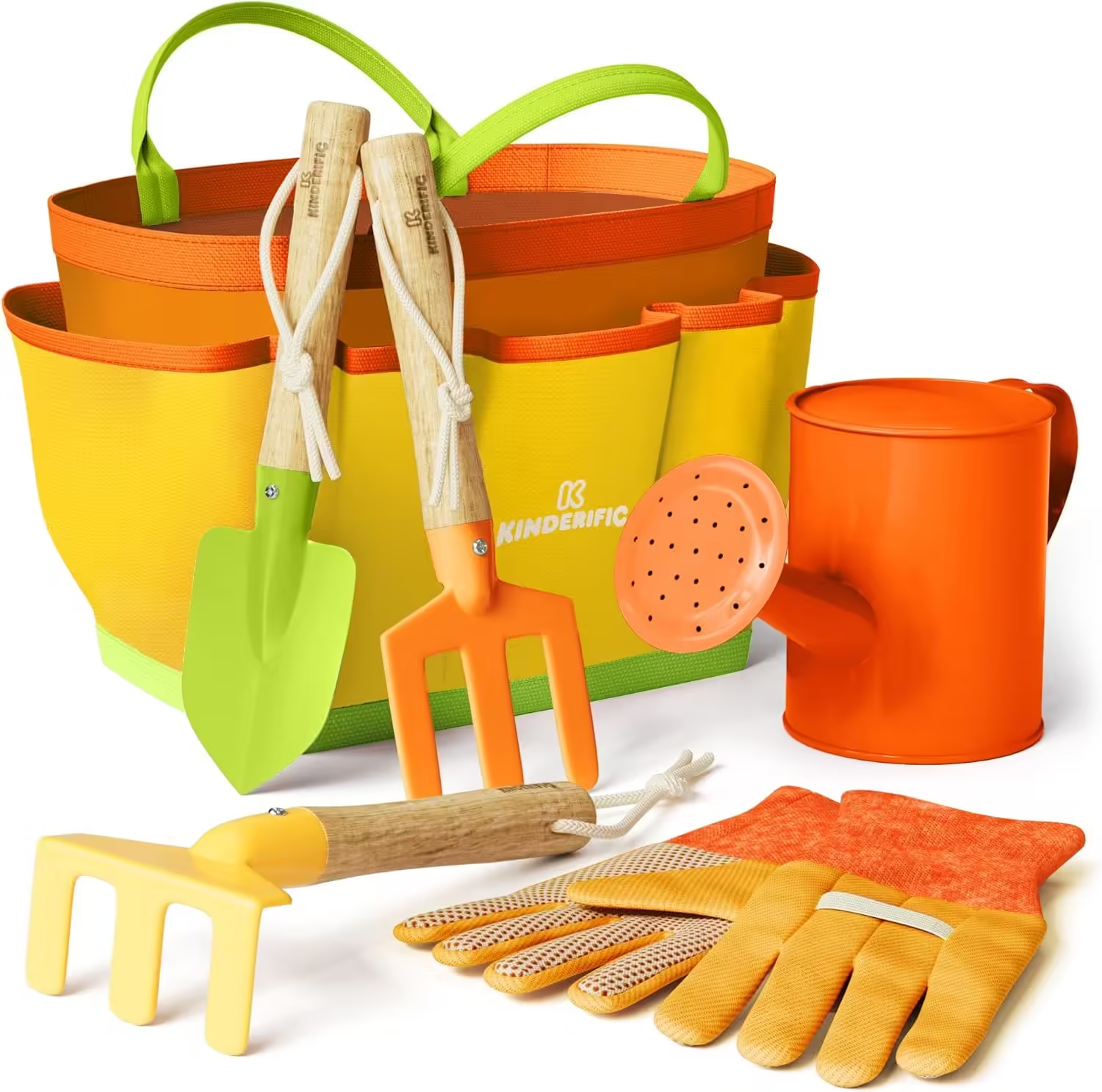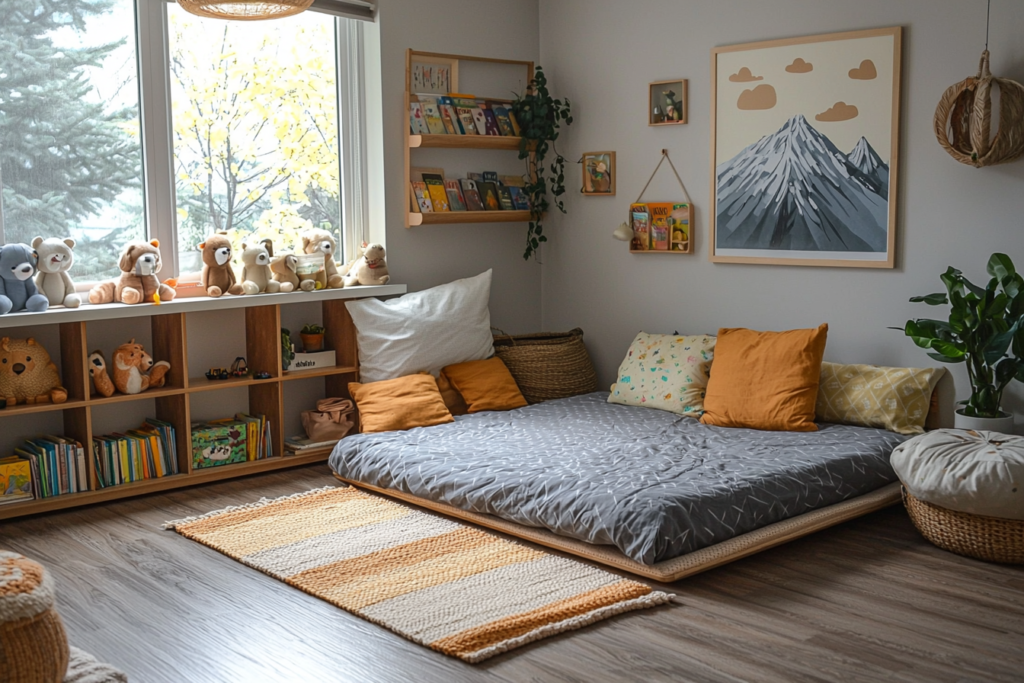This site contains affiliate links, view the disclosure for more information.
What Are Montessori Toys?
The Montessori method emphasizes hands-on learning, encouraging children to explore the world around them and fostering skills that build independence. So the term “Montessori toys” refers to toys that align with these principles, promoting independent exploration, creativity, and learning through play and direct interaction.
Montessori toys are usually free from batteries or electronic components. The don’t have rigid instructions or pre-set rules, allowing the child to lead play. With less input from the toy itself, children are encouraged to think critically, solve problems, and play in more imaginative ways, which often results in longer play sessions and meaningful development.
Montessori toys are thoughtfully crafted to support a child’s developmental stages and promote skills such as fine motor development, concentration, problem-solving, and sensory exploration.
While I will mention some traditional Montessori toys, most of my recommendations are not strictly “Montessori” but are toys that fit the Montessori philosophy, sharing core elements like simplicity, open-endedness, and functionality.
Please note that some of these toys contain small parts, so it’s important to supervise children during play to ensure safety.
Read more: 6 Easy Ways to Get Started With Montessori At Home Today!

Image by Kelly Mindell
The Main Elements of Montessori Toys:
Simple → Simplicity in toys encourages open-ended and creative play. The fewer features a toy has, the more creative and resourceful the child can become, using it in a variety of ways as they grow. Simple toys remain relevant longer, adapting to different stages of development.
Natural materials → Montessori toys are often made from natural materials, mainly wood, because the texture, weight, and warmth of these materials provide a more grounded, real-world experience for children, fostering a closer connection to the natural world. They also promote a calmer, more focused state during play, helping prevent overstimulation that can occur with bright, noisy, or flashy toys. Wooden toys also tend to last longer way longer than plastic toys.
Reality-based → The Montessori method encourages play that is based on the real world, helping children learn about their environments. Toys like miniature people, animals, and everyday household objects (such as kitchen tools) introduce children to elements they recognize from their own lives, making playtime more meaningful and educational.
Purposeful/Functional → Montessori toys require the child to actively engage with the toy, fostering creativity, independence, and practical life skills. For example, rather than a plastic toy vacuum that only makes sounds, Montessori encourages using child-sized tools like a real broom or mop that the child can actually use for a functional purpose.
Do all Montessori toys have to fit in all of these categories?
Although there’s no “official” answer to this question, I would say no. A Lego set, for example, would be considered a Montessori toy. Although it is made out of plastic, it is simple, open-ended, allows children to replicate their reality, and requires active participation.

Image by Montessori Up
Montessori Toys That Are Actually Worth It
When choosing Montessori toys, I look for high-quality, mostly open-ended toys that can withstand the inevitable rough-and-tumble of play and last through the years.
From my experience, the best toys are those made from solid wood, often crafted by small, independent makers. That’s why most of the toys I get and recommend come from Etsy or local businesses, though you can also find some good old-fashioned toys on Amazon or through trusted brands.
When it comes to the number of toys, less is definitely more. Research shows that children engage more deeply and creatively when they have fewer toys available at any given time. Investing in fewer but higher-quality toys allows for richer play experiences. A simple toy rotation system also works wonders here – rotating toys keeps playtime fresh and exciting while making cleanup and organization so much simpler.
Toy Categories
Here I’ll highlight our favorite toys, grouped into categories based on their primary developmental focus. Most of these toys are versatile, growing with your child, and often used in different ways at different ages.
Open-ended toys
Open-ended toys are those that can be used in a variety of ways. They allow children to follow their curiosity and creativity without preset limitations, leading to endless possibilities for play. These toys are excellent for promoting problem-solving skills, critical thinking, and imaginative exploration, aside from developing fine motor skills, as most small toys do.
→ Wooden animal figurines (budget-friendly plastic alternative)
→ Wooden blocks or Legos
Click on the images below for the link of each product.
Sensory toys
Sensory play engages children’s senses – touch, sight, sound, and sometimes even smell or taste – helping them explore and make sense of the world around them. Since most of them require intricate movements from the hands and fingers, they are also crutial for fine motor skills development.
→ Musical toys or real child-sized instruments
→ Nature collections (which you could buy, or simply give your child a box/basket and have them go outside collect a bunch of natural materials they find interesting)
→ Sensory bin and tools / Pouring, scooping, and pincing tools
→ Art supplies, such as paint, crayons, textured papers, clay, etc.
Movement-related toys
Movement toys encourage physical activity and help children develop their gross motor skills, balance, and coordination. These toys also promote confidence and body and spatial awareness.
→ Pikler triangle / climbing set
→ Indoor climbing walls / Swedish ladder
Problem-solving and structured toys
Structured toys provide opportunities for children to develop critical thinking and problem-solving skills. Although some of these toys can be open-ended, most typically have a specific goal, such as fitting pieces together or completing a sequence, which can foster focus and perseverance.
→ Puzzles (There are infinite options, but I definitely recommend getting wooden puzzles for little ones – check out some options below)
→ Counting games/Mathematics toys
→ Board games
→ Build It Yourself (DIY sets)
Real-life toys
Real-life toys mimic the tools and objects children see adults using every day. These toys are essential for teaching practical life skills, responsibility, and independence. They also help children feel empowered by allowing them to participate in real-world tasks.
→ Child-sized and safe kitchen tools



